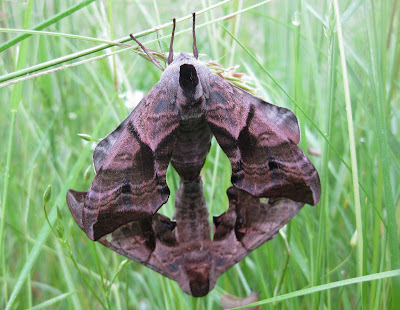January
Roe Deer - Capreolus capreolus
Our largest mammal species on site. I've also seen Fallow Deer very closeby, but never actually within our site boundaries.
February
This isn't a fungus, but is actually a type of bacteria called Nostoc commune; a colonial species of cyanobacteria.
Cyanobacteria are thought to have converted Earth's early atmosphere into an oxygen-rich one. It occurs extensively on the bare clay soil around the North West Zone and from a distance resembles squished rabbit poops.
March
Common Toad - Bufo bufo
We often find Toads under the reptile matts long before the Grass Snakes wake up from their winter sleep. Breeding occurs in the ponds and within the reedbeds along the River Mole. Unlike frogs, Toads lay their eggs in long strings.
Toad spawn, North West Zone
April
Bluebells - Hyacinthoides non-scripta. Horleyland Wood
Found throughout the woodlands at Gatwick, this ancient woodland indicator species crates a heady scent on warm spring days.
May
Not a mirror image, but in fact a mating pair of Eyed Hawk-moths Smerinthus ocellata, spotted by Tom Forward along the River Mole grasslands.
June
Grass Snake - Natrix helvetica
Our most common reptile species at Gatwick; widespread across both sites but they are particularly found of the grassy margins of scrub areas.
July
Platystomos albinus - (a type of fungus weevil)
This is a Nationally Notable B species, found in a well-rotted pile of oak and willow logs. It may not seem obvious from the pic, bit this little dude measured only about 1cm from nose to rear! (Thanks to Graeme Lyons for correcting my I.D on this one).
August
A colony of these Willughby's Leafcutter Bees (Megachile willughbiella) set up shop in a bee hotel constructed by Tom Simpson's volunteers.
Leafcutter bee nest
September
Harvest Mouse - Micromys minutus
are commonly found in the reed beds along the River Mole.
October
Brown Long-eared bats - Plecotus auritus
November
Eyelash Cup Fungus - Scutellinia scutellata. Upper Picketts Wood
December
Tawny Owl - Strix aluco
It just so happens that Tawny Owls are the subject of a current BTO survey, which members of public can also join in on.
Happy New Year everyone and all the best for 2019!!
































